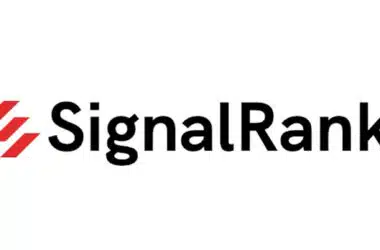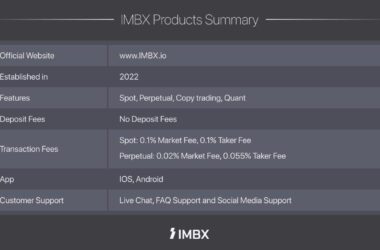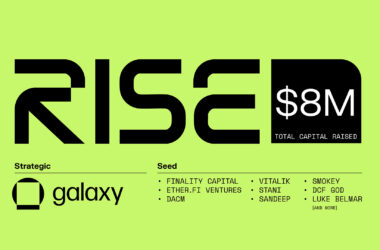Table of Contents
Investigating What the Future Holds for Financial Technology and Looking at Some Promising New Frontiers in the Industry.
The world of technology is always moving forward, which is driven by the rapid improvement of technology as well as the changing demands of customers. New fields are emerging at the same time that traditional financial services are undergoing disruption and transformation. These new fields offer solutions to fulfill the ever-increasing demands of businesses and consumers.
This article takes a deep dive into the dynamic and forward-thinking areas of the financial technology landscape, stressing the potential for growth in those areas as well as the impact those areas will have on the future of finance.
Artificial Intelligence
The field of international banking may stand to benefit from the application of artificial intelligence (AI) in the creation of new value. The annual value it creates might be as high as a trillion dollars, according to some estimates. In order to maintain a competitive advantage against rapidly expanding technology businesses and to improve their operations, financial institutions are increasingly embracing an AI-first strategy.
AI is being implemented into all facets of financial operations, such as applications that interact directly with customers, middle and back office procedures, and data analysis. In recent years, financial institutions have begun experimenting with artificial intelligence (AI) in order to increase their ability to detect fraud, streamline their operations, and automate customer interactions. At this time, the emphasis is being placed on capitalizing on data about customer behavior that is not being fully utilized in order to achieve a competitive advantage and unlock the potential of ecosystem-based financing.
Banks that place a priority on artificial intelligence technology will see improvements in their efficiency as a result of more automation and more sophisticated diagnostics. They will adopt the agility and speed of homegrown enterprises, which will result in speedier innovation and increased engagement with non-banking partners to generate integrated value offerings. In addition, the utilization of privacy protection solutions will pave the path for increased safety for consumers.
Blockchain
Distributed Ledger Technology, also known as DLT, will play an increasingly important role in supporting ecosystem funding. This will be accomplished by enabling data storage and cross-chain technology, which will promote interoperability among various blockchains. Fintech innovations such as digital wallets, digital assets, decentralized financing (DeFi), and non-fungible tokens (NFTs) rely heavily on key technologies like as contracts, zero knowledge proofs, and distributed data sharing. These technologies play an essential part in the development of these innovations.
The increasing interest in assets from institutional investors as well as the rapid rise of DeFi — which has a total locked up value of $2.1 trillion — demonstrate the disruptive potential of DLT in established markets. In addition, central banks are investigating Central Bank Digital Currencies (CBDCs), with approximately sixty percent of central banks now testing or researching this technology.
Applications of DLT include transaction settlement support services for real-time transactions, as well as authentication ecosystems for assets that are based on zero-knowledge proofs and DeFi. The distributed ledger technology (Blockchain) based decentralized finance (DeFi) is transforming value chains and structures, promising enormous expansion as financial policies and regulations adjust.
Cloud computing
The adoption of cloud computing has caused significant shifts in the commercial landscape. According to study conducted by McKinsey, it is anticipated that by the year 2030, cloud technology would contribute more than $3 trillion to the profits before interest, taxes, depreciation, and amortization (EBITDA) of the top 500 corporations located all over the world. It is not hard to see the benefits that come with adopting cloud computing; it improves efficiency, lowers expenses, and increases security for apps that have been transferred.
Cloud services can be broken down into three categories
Public cloud – refers to clouds that are held by service providers and made available to a variety of companies.
Hybrid clouds – are created by combining private and public cloud resources using a specialized piece of software.
Private clouds – are those that have been constructed specifically for the use of a single customer.
Edge computing and edge clouds are two notable technologies that have emerged in cloud computing recently. Interactions between the Internet of Things (IoT) and artificial intelligence (AI) are greatly improved as a result of their implementation. Containers hosted in the cloud can also play a part in the process of driving innovation at the platform as a service (PaaS) level. In addition, the use of AI into cloud services is fast developing in fields such as picture and audio search.
The financial savings that can be realized through the use of cloud computing are only one benefit. Financial organizations are able to access storage and computing services while simultaneously streamlining their operations, which results in cost savings. Additionally, it sets the path for future implementations of banking models such as open banking and banking as a service. In order for banks to maintain their ability to be flexible, responsive, and scalable, they will increasingly rely on the infrastructure provided by the cloud while also adopting a microservice architecture that is built on the cloud and utilizing APIs for communication between machines.
IoT
The Internet of Things (IoT) has made significant headway and is now having a variety of effects on the world’s monetary systems. The utilization of sensor systems, wireless communication networks, and application support are all examples of these consequences. Embedded systems are making it possible for transactions to take place in the realm of finance thanks to the proliferation of RFID labeling and communication solutions for the Internet of things.
The Internet of Things (IoT) is having an increasingly obvious impact on fintech, making it a vital topic for students and professionals to concentrate on for the purpose of securing employment. The Internet of Things has applications in the financial sector, including topics such as carbon trading and Environmental, Social, and Governance (ESG) issues. Accurate measurements that are collected through the internet of things play a role in contributing to the maintenance of compliance and transparency in these spheres.
The Internet of Things is being used by insurance companies to more accurately analyze risks and give customised products in order to boost consumer engagement. In addition, banks are profiting from solutions based on the internet of things that improve risk management operations, such as inventory management and property finance.
The Internet of Things is revolutionizing trade finance by facilitating the tracking of products flow, which in turn leads to improved levels of trust between all parties involved. In addition, technological advancements such as on-demand liquidity are making it possible for new innovations to emerge, which in turn is transforming the financial landscape.
The potential of the Internet of Things (IoT) extends to devices as financial institutions are getting more personal with their clients by incorporating banking services into wearable technology such as smartwatches and fitness trackers. This development demonstrates how the Internet of Things may be used to offer integrated financial experiences.
Open source
Businesses and financial innovation need to prioritize speed and scalability in order to thrive in the digital economy. Open source software, serverless architecture, and software as a service (SaaS) have become useful tools for traditional financial institutions as well as Internet startups who are entering the fintech space.
Serverless architecture gets rid of the need for in-house servers, which allows businesses to save both time and resources. Software as a service (SaaS) allows businesses to access software without the need to own or manage it. This technique not only lowers expenses but also enables scalability on a flexible basis. Open-source software makes its source code readily available to developers, which enables them to produce applications with greater productivity.
When leveraged in conjunction with one another, these technologies make it possible for businesses to rapidly grow their infrastructure and build prototypes at a cost. Traditional financial institutions, on the other hand, encounter difficulties in the process of implementing these technologies due to factors including IT infrastructure, development skills, and risk management capacities. It is imperative that businesses prioritize IT capabilities that offer response times if they wish for their fintech innovation plans to be successful.Investigating the Potential of Financial Technology as a Promising Career Field.
Embracing the Future of Fintech for a Bright Career Path
In this insightful essay, we dig into the fascinating new areas that are emerging within the finance business, such as artificial intelligence (AI), blockchain technology, the Internet of Things (IoT), cloud computing, and open source solutions. These ground-breaking innovations are reshaping the landscape of the financial industry. laying the groundwork for the creation of a multitude of chances for individuals who are willing to evolve and develop with the business.
Because the world of finance is always changing, it is essential that students and those who aspire to work in the financial industry realize how important it is to concentrate their studies on specific areas in order to increase their chances of finding work in the future. They will be well prepared to handle the constantly shifting landscape of the fintech industry and secure lucrative job possibilities if they expand their understanding of these technologies and acquire the expertise necessary for doing so.
Students may position themselves at the vanguard of this financial revolution if they embrace the promise of artificial intelligence (AI), explore technology, comprehend the effect of the internet of things (IoT), utilize the capabilities of cloud computing, and leverage open source solutions. By devoting time and energy to the mastery of these specialized areas, individuals can not only improve the breadth and depth of their skill set but also contribute to the growth of a flourishing financial ecosystem that encourages innovation to the mutual advantage of businesses and their customers. The financial technology of the future is now here, and it is time to make the most of all the possibilities.
















Recent Comments